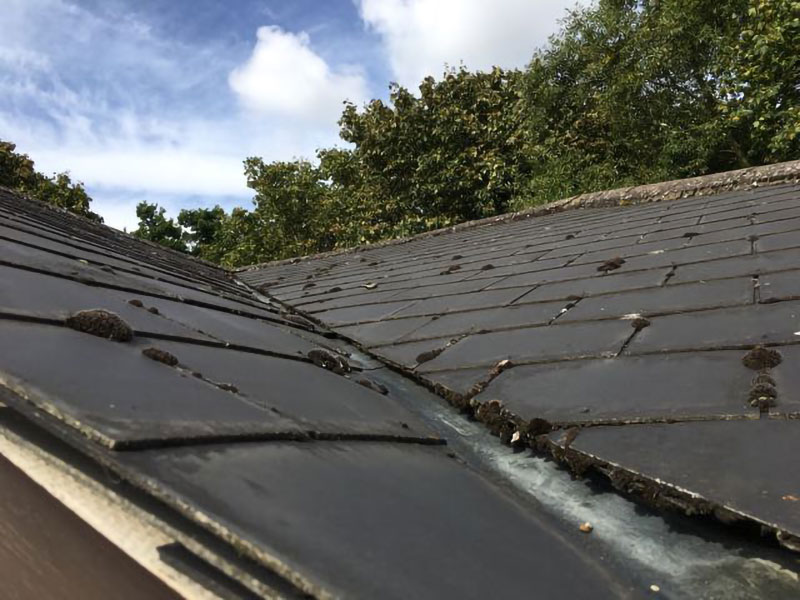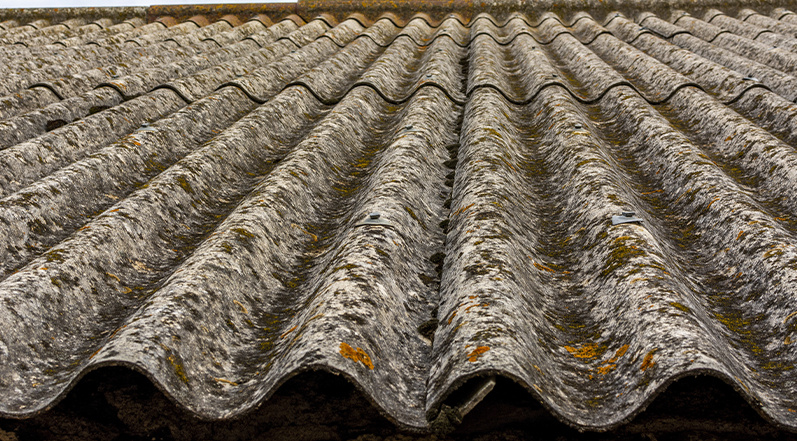Asbestos Roofing Material Identification Hazardous Materials & Disposal Services
Asbestos risk assessment is a crucial process for making certain the security and health of people exposed to this hazardous material. Asbestos, once generally used in building and insulation merchandise, poses extreme health risks, including lung cancer, mesothelioma, and asbestosis. Given its widespread historic use, understanding asbestos risk assessment is important for owners, property managers, and building professionals.
The preliminary part of asbestos risk assessment usually includes figuring out potential asbestos-containing materials (ACMs) in a building. This involves a thorough inspection, typically performed by licensed professionals skilled in recognizing and sampling materials that will contain asbestos. Inspectors concentrate on areas similar to insulation, flooring tiles, textured paints, and roofing materials, that are traditionally recognized for asbestos use.
Post Asbestos Roof Removal Cleaning Diy Awareness For Asbestos Removal

Once potential ACMs are identified, samples are collected for laboratory analysis. This step is essential since not all materials that look similar to asbestos are actually harmful. The evaluation is conducted to determine the presence and concentration of asbestos fibers. These laboratory results guide subsequent actions relating to management and abatement.
Risk assessment additionally consists of evaluating the condition of any recognized asbestos materials. Damaged or deteriorating ACMs are extra hazardous as a result of increased likelihood of fiber release into the air. Professionals study the extent of injury and the potential for exposure based on the material’s location and condition. This assessment informs the danger stage posed to occupants and employees in proximity to the identified materials.
An integral part of the assessment is contemplating the situation of the ACMs. Materials in high-traffic areas may present higher risk as a outcome of potential for disturbance. Likewise, materials used in ventilated areas may launch more fibers if disturbed, increasing the risk of inhalation. The analysis additionally contains assessing who may be uncovered and under what circumstances they may come into contact with harmful asbestos fibers.
Post Asbestos Roof Removal Cleaning Cost Guide For Asbestos Removal
Determining the timeframe of exposure is another key facet of asbestos risk assessment. Short-term exposure would possibly carry lower risks in comparability with long-term or repeated exposure. Although even transient encounters with high levels of asbestos can be dangerous, understanding these nuances helps in precisely assessing the chance to individuals over time.
Recommendations are then fashioned based on the findings of the danger assessment. If the assessment identifies vital hazards, options may embrace monitoring, encapsulation, or removal of the ACMs. Each option presents its personal set of considerations, including cost, disruption, and long-term safety.
Regular monitoring and periodic assessments may be needed in some instances. This is because conditions in a building can change over time, probably affecting the safety of ACMs. These ongoing evaluations ensure that any new risks are recognized promptly, allowing for instant corrective measures if necessary.
Documentation performs a significant role in asbestos risk assessment. All findings, suggestions, and actions taken must be meticulously recorded for legal and compliance causes. Record-keeping provides a clear historical past of the chance assessment process, which is crucial for informing future assessments and ensuring safety regulations are followed.
Successful Asbestos Roof Removal Stories Cost Guide For Asbestos Removal
Compliance with native and federal regulations is one other critical consideration in the assessment process. Different jurisdictions may have specific laws governing asbestos handling and risk assessment. Stakeholders have to be acquainted with and cling to these regulations to ensure the safety of public health and avoid potential legal penalties.
Public training about asbestos risks is important as well. Many people remain unaware of the hazards related to asbestos exposure and the importance of proper assessments. Community awareness can inspire action, encouraging property house owners to conduct assessments and take needed precautions, thereby reducing the general risk of exposure.
In conclusion, asbestos risk assessment is an important practice for identifying and mitigating the hazards posed by asbestos in varied environments. The process encompasses thorough inspections, laboratory analysis, situation evaluations, and compliance with regulations. Through effective risk assessment, it is possible to safeguard public health, making it crucial for owners and professionals alike to prioritize these evaluations in properties probably containing asbestos.
Asbestos Roof Removal Case Studies Sydney Cost Guide For Asbestos Removal
- Identification of asbestos-containing materials (ACMs) in buildings via thorough inspections and sampling techniques.
- Evaluation of the condition and extent of injury to ACMs, contributing to understanding the urgency of risk management.
- Assessment of exposure risks for various occupation teams working in or near asbestos websites, together with maintenance and building personnel.
- Implementation of legal and regulatory requirements, making certain adherence to local and national safety standards regarding asbestos dealing with.
- Development of a tailored asbestos management plan, outlining steps for monitoring, maintenance, and potential removal of ACMs.
- Training and teaching programs for employees on asbestos hazards and safe work practices to attenuate exposure.
- Regular re-evaluations of asbestos conditions to account for changes within the building environment or occupancy ranges.
- Use of risk communication strategies to inform stakeholders about asbestos presence, risks, and management actions.
- Collaboration with health professionals to monitor any health effects on workers doubtlessly exposed to asbestos fibers.
- Establishment of emergency response plans for asbestos-related read here incidents to successfully manage exposure official site risks and ensure safety.
What is asbestos risk assessment?
Asbestos risk assessment is the process of evaluating the potential hazards posed by asbestos materials in a building. This assessment helps identify the presence of asbestos, evaluate its situation, and determine the level of risk to occupants and staff, guiding necessary actions for management or removal.
Why is an asbestos risk assessment necessary?
Using Technology In Asbestos Roof Removal Hazardous Materials & Disposal Services
An asbestos risk assessment is essential to protect the health and safety of individuals who could also be exposed to asbestos fibers - Asbestos Roof Replacement Options. It helps identify areas where asbestos is current, assess the chance of exposure, and implement applicable control measures to mitigate those risks, guaranteeing compliance with legal regulations
How usually ought to an asbestos risk assessment be conducted?

It is really helpful to conduct an asbestos risk assessment every three years or every time vital changes occur in the building environment, similar to renovations or modifications in occupancy. Regular reassessment ensures that any adjustments in asbestos condition or risk exposure are promptly recognized and addressed.
Who should conduct the asbestos risk assessment? (Using Technology In Asbestos Roof Removal)
Risk Communication Regarding Asbestos Removal Diy Awareness For Asbestos Removal
The assessment should be carried out by a qualified and licensed asbestos professional with experience in figuring out and managing asbestos-containing materials. This ensures that the assessment is thorough, correct, and compliant with native regulations and safety guidelines.

What happens if asbestos is discovered in the course of the risk assessment?
If asbestos is discovered, the certified professional will advise on the most effective course of action, which may embody leaving it undisturbed if it is in good condition, encapsulating it, or safely eradicating it. Ongoing monitoring and management plans will sometimes be established to make sure safety.
Can I carry out an asbestos risk assessment myself? - Long-Term Effects Of Asbestos Roof Removal
Successful Asbestos Roof Removal Stories Residential Asbestos Removal Services
While some preliminary assessments may be made by individuals who're knowledgeable about asbestos, it is strongly really helpful to hire a licensed professional for a complete risk assessment. Professionals have the proper training and tools to precisely identify and evaluate asbestos risks.
What are the potential health risks of asbestos exposure?
Asbestos exposure can lead to serious health points, together with asbestosis, lung cancer, and mesothelioma. These conditions typically develop after extended exposure, making it crucial to evaluate and manage asbestos risks diligently to protect public health.
Environmental Impact Of Asbestos Roof Removal Removal And Disposal Of Asbestos
Are there regulations relating to asbestos risk assessments?
Yes, many nations have specific regulations governing asbestos management, together with the requirement for regular risk assessments in commercial buildings and sure residential constructions. Compliance with these regulations is necessary to make sure safety and avoid legal repercussions.
What ought to I do if I suspect asbestos in my home?
Educational Resources On Asbestos Safety Asbestos Roof Maintenance Services
If you suspect the presence of asbestos in your home, do not disturb the material. Contact a licensed asbestos professional to conduct a risk assessment and determine one of the best course of action to administer or take away the asbestos safely.